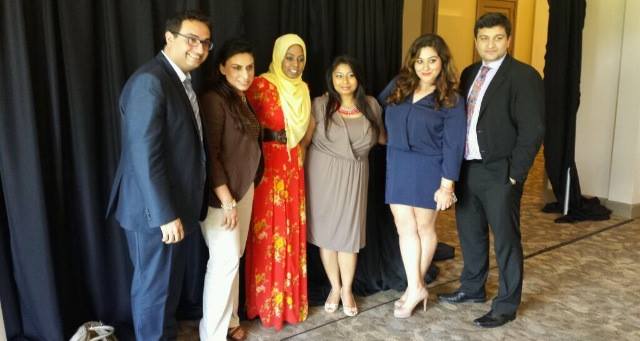
The information below is provided by Reema Rasool, founder of SouthAsianYoungWomenEntrepreneurs:
 South Asian Young Women Entrepreneurs (SAY WE), a national network of business-minded executives in the fields of technology, finance, entertainment and fashion, hosts three full-day conferences, aimed to educating women business owners about finance, marketing, public relations and social media. The conferences, “Raise, Rise, Rule!,” are sponsored by founding partner Wells Fargo.
South Asian Young Women Entrepreneurs (SAY WE), a national network of business-minded executives in the fields of technology, finance, entertainment and fashion, hosts three full-day conferences, aimed to educating women business owners about finance, marketing, public relations and social media. The conferences, “Raise, Rise, Rule!,” are sponsored by founding partner Wells Fargo.
Subject-matter experts and entrepreneurs will discuss topics including, building your business credit, reinvesting in your business, protecting your credit score, creating relationships with business bankers, marketing your new business, reaching out to the media and implementing a social media strategy. The conferences started in New York City on May 17, with the second one in Houston on June 14 and the last one will takes place in the San Francisco Bay Area on August 9 at the Indian Community Center. For more information and to register, please visit www.saywe.us.
Raise, Rise Rule: Agenda for August 9 in the Bay Area:
11AM – REGISTRATION / BREAKFAST
11:30AM – OPENING REMARKS – REEMA RASOOL, FOUNDER OF SAY WE
WELCOME REMARKS – WELLS FARGO SPOKESPERSON
OPENING KEYNOTE – SHELLY KAPOOR COLLINS
12PM – PANEL – ‘MAKING DOLLARS & SENSE: LET’S TALK MONEY’
1PM – POWER NETWORKING LUNCH
2PM – PANEL – ‘TRICKS OF THE TRADE:
HOW TO MARKET YOUR BUSINESS USING PR, SOCIAL MEDIA AND OTHER TECHNIQUES’
3PM – COFFEE/ TEA BREAK
3:15PM – KEYNOTE ADDRESS – FAISAL HOQUE
‘DO YOU HAVE THE COURAGE TO SURVIVE AND THRIVE AS AN ENTREPRENEUR’
[divider]
Panel discussions on June 14 in Houston:
“Making Dollars and Sense: Let’s talk money” and “Tricks of the Trade: How to Market Business Using PR, Social Media, and Other Techniques.”
By Rishika Reddy and Pia Chakrabarti:
The first panel focused on money, and creating the proper balance between current expenses and potential growth. The panelists included Chef Kiran Verma, owner of Kiran’s Houston restaurant, Tanaz Choudhary, CEO and president of TanChes Group of Companies & MABY USA, Ruby Bhandari, founder and executive designer of Silk Threads, and Apurva Sanghavi, co-founder of START Houston.
The discussion began with every panelist’s initial struggle with getting started and how to stay focused on their endeavor. Verma spoke about her journey of starting out in America as a newlywed housewife from India, and later becoming a chef and owning multiple restaurants.
The conversation later focused on finances, the business’ infrastructure. when to take in investors, and finding the right balance by knowing where you are headed. The panel also discussed the emotional and financial downs during the process of building a business. To be successful, the panelist made mention of understanding your market, and finding the right mentors to guide you through the process.
The main message of the first panel was: where there is passion, investment will follow.
BG’s Editor-in-Chief, Atiya Hasan was a panelist during the second panel, “Tricks of the Trade: How to Market Business Using PR, Social Media, and Other Techniques.” The panelists also included Zeb Mamsa, advertising director of Bibi Magazine, Abbas Hashmi, founder of Green Card Capital, and Sarah Ali, owner of The Transformation Studio. Each one discussed how to leverage their social media accounts and turn “likes” into revenue and/or traffic.
“Know your brand, your audience, stick to your focus, everything else falls into place. ” – @AtiyaHasan05 #saywe2014 pic.twitter.com/hA62BiFCWn
— Brown Girl Magazine (@BrownGirlMag) June 14, 2014
The last conference takes place in the San Francisco Bay Area on August 9. For more information and to register, please visit www.saywe.us.
#BayArea RaiseRiseRule is coming to you Aug 9th! #Free by our sponsor @WellsFargo http://t.co/jOizQcRkmV #saywe2014 pic.twitter.com/bfN5R74VE5 — SAY WE (@saywe) June 27, 2014




